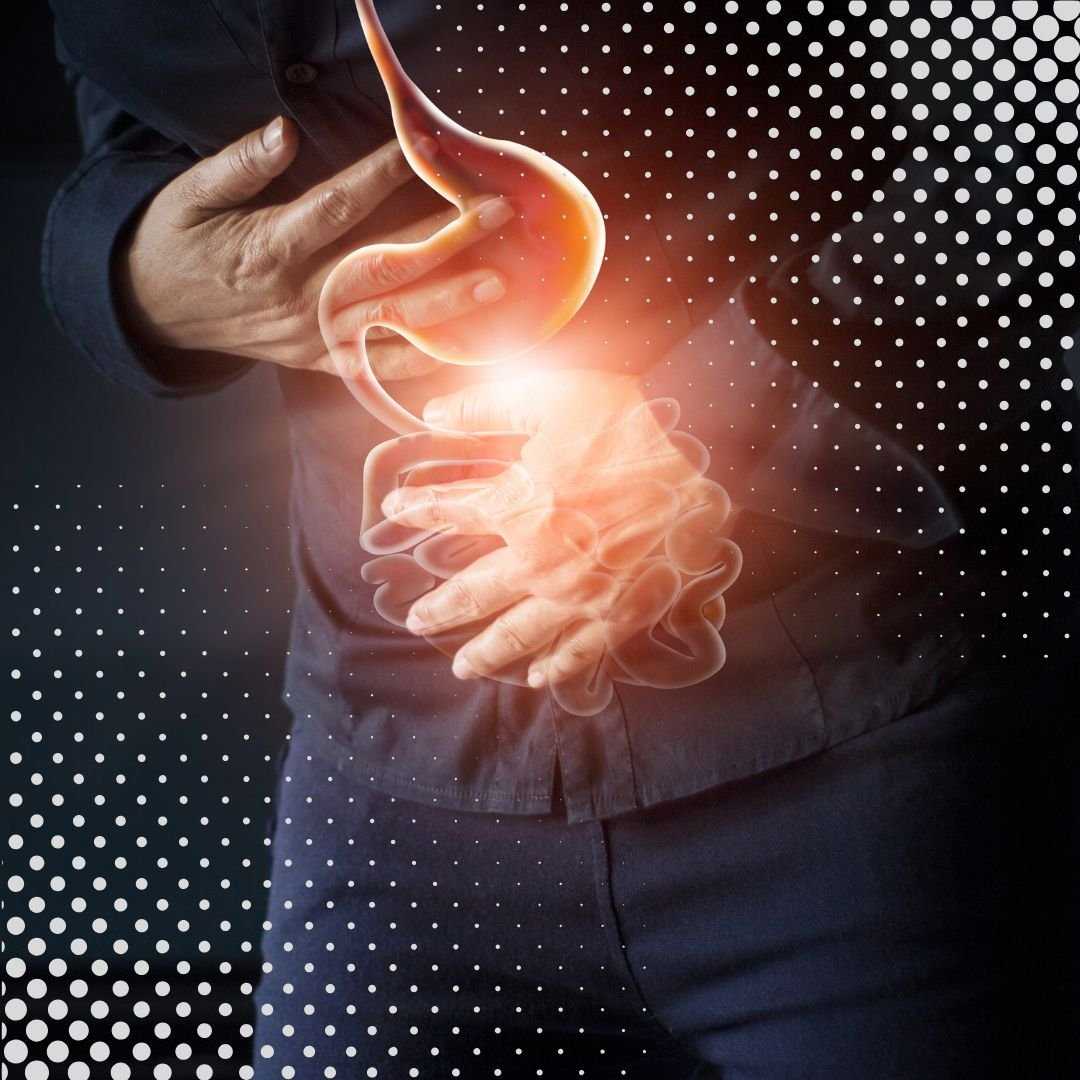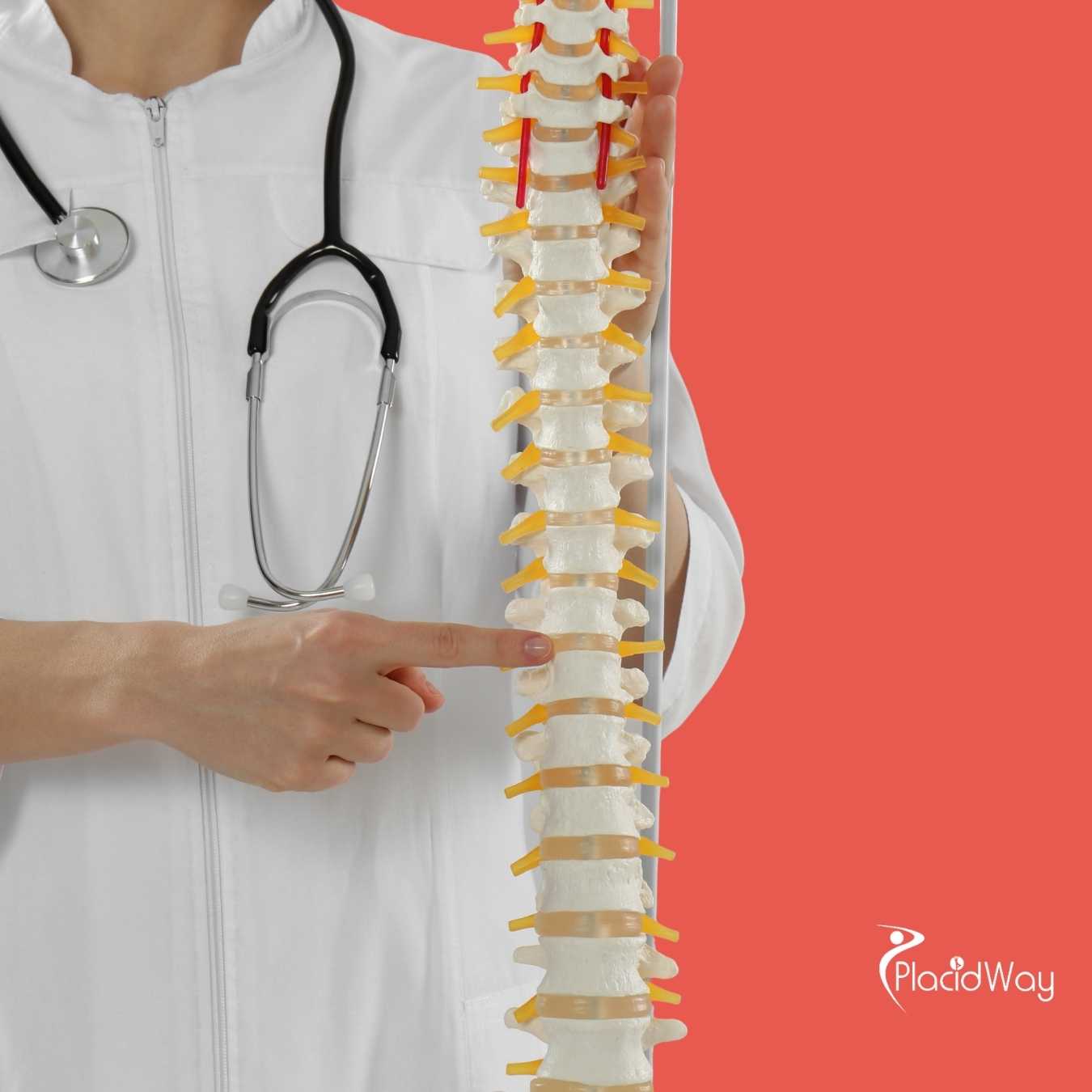The Role of Stem Cell Therapy in Treating Degenerative Disc Problems
Living with degenerative disc disease can be incredibly challenging, often leading to chronic back pain, reduced mobility, and a significant impact on daily life. For many years, treatment options primarily focused on managing symptoms through pain medication, physical therapy, or, in severe cases, surgery. However, the field of regenerative medicine has introduced a groundbreaking approach: stem cell therapy. This innovative treatment aims to go beyond just symptom management by targeting the root cause of disc degeneration, offering hope for real healing and long-term relief.
The idea that your own body's cells could help repair damaged spinal discs is both fascinating and life-changing for individuals seeking alternatives to traditional methods. Stem cells possess a unique ability to differentiate into various cell types, including those found in the intervertebral disc, and to promote tissue repair. This blog post will delve into how these powerful cells work, their current applications, potential benefits, and important considerations, including the global landscape of these treatments through medical tourism. Our goal is to provide clear, comprehensive answers to common questions about stem cells for degenerative disc disease.
How Do Stem Cells Work for Degenerative Disc Disease?
When a disc degenerates, it loses its water content, elasticity, and structural integrity, leading to pain and dysfunction. Stem cells, particularly mesenchymal stem cells (MSCs), are injected directly into the affected disc. Once there, they perform several key functions:
- Tissue Regeneration: MSCs have the capacity to differentiate into chondrocyte-like cells, which are the main cell type in the intervertebral disc. This helps to rebuild the damaged nucleus pulposus (the jelly-like center of the disc) and annulus fibrosus (the tough outer layer), potentially restoring disc height and function.
- Anti-inflammatory Effects: Stem cells release anti-inflammatory molecules that can reduce the chronic inflammation often associated with degenerative disc disease, thereby alleviating pain.
- Growth Factor Secretion: They secrete various growth factors and cytokines that stimulate local cells to repair and regenerate tissue, fostering an optimal healing environment within the disc.
This multi-faceted approach aims to address not just the symptoms but the underlying structural damage of the degenerative disc, offering a more lasting solution than pain management alone.
What Types of Stem Cells Are Used for Disc Regeneration?
Mesenchymal stem cells (MSCs) are the most commonly utilized type of stem cells in regenerative treatments for degenerative disc disease. They are "multipotent," meaning they can differentiate into various cell types, including bone, cartilage, and fat cells, which are crucial for disc repair. These cells are preferred due to their excellent safety profile and regenerative capabilities. MSCs can be harvested from different parts of the patient's body (autologous cells) or from screened donors (allogeneic cells):
- Bone Marrow-Derived Mesenchymal Stem Cells (BM-MSCs): These are taken from the patient's own bone marrow, often from the hip bone. This is a common and well-established source.
- Adipose-Derived Mesenchymal Stem Cells (AD-MSCs): Harvested from the patient's fat tissue, typically through a mini-liposuction procedure. Adipose tissue is an abundant source of MSCs, often easier to obtain than bone marrow.
While other types of stem cells are being explored, BM-MSCs and AD-MSCs are currently at the forefront of clinical applications for spinal disc regeneration due to their proven safety and efficacy in various studies.
What Are the Benefits of Stem Cell Therapy for Back Pain?
For individuals suffering from chronic back pain due to degenerative disc disease, stem cell therapy offers a range of potential benefits that extend beyond temporary symptom relief:
- Pain Reduction: By reducing inflammation and promoting tissue repair, stem cells can significantly decrease the intensity and frequency of back pain.
- Improved Function and Mobility: As the disc heals and pain subsides, patients often experience an increase in flexibility and range of motion, allowing them to engage in activities they previously avoided.
- Potential for Disc Regeneration: Unlike conventional treatments that merely manage symptoms, stem cell therapy aims to reverse the degenerative process by stimulating the body to repair the damaged disc tissue.
- Reduced Need for Surgery and Medication: For many, stem cell treatment can serve as a viable non-surgical option, potentially postponing or even eliminating the need for invasive spinal surgery and reducing the long-term use of pain medications.
These benefits contribute to an improved quality of life, allowing patients to regain functionality and comfort without the extensive recovery associated with surgery.
Are Stem Cell Treatments for Degenerative Disc Disease FDA-Approved?
In the United States, the Food and Drug Administration (FDA) regulates cell-based products, including stem cells. For a product to be fully FDA-approved, it must undergo rigorous testing through clinical trials to prove its safety and efficacy for a specific condition. As of now, while promising research is ongoing, no stem cell product has received full FDA approval specifically for the treatment of degenerative disc disease for general commercial use outside of research studies.
However, some clinics in the U.S. may offer treatments using a patient's own minimally manipulated cells (like bone marrow aspirate concentrate or adipose tissue) based on exceptions within FDA regulations. It is crucial for patients to understand the regulatory status of any offered treatment and to inquire whether it is part of an approved clinical trial or operating under a specific regulatory exemption. For many patients seeking these therapies, this often leads them to explore options in countries with different regulatory landscapes.
What Are the Risks and Side Effects of Stem Cell Therapy for Discs?
While stem cell therapy is generally considered safe, like any medical procedure, it carries some potential risks and side effects. Most commonly, these are minor and temporary:
- Injection Site Pain/Swelling: Patients may experience soreness, bruising, or mild swelling at the site where the stem cells are injected into the disc, or where they are harvested (e.g., hip for bone marrow, abdomen for fat).
- Infection: Any injection carries a small risk of infection, although sterile techniques are strictly followed to minimize this.
- Nerve Damage: While rare, there's a theoretical risk of nerve injury during the injection procedure, particularly with spinal injections.
- Allergic Reaction/Immune Response: If allogeneic (donor) cells are used, there's a very slight chance of an immune reaction, though MSCs are generally considered immune-privileged. Autologous (patient's own) cells virtually eliminate this risk.
- Bleeding: Minor bleeding can occur at the harvest or injection sites.
It is important to discuss these potential risks thoroughly with a qualified healthcare provider and ensure the procedure is performed by an experienced specialist in a sterile environment.
What is the Typical Cost of Stem Cell Therapy for Degenerative Disc Disease?
The cost of stem cell therapy for degenerative disc disease is a significant factor for many patients, and it can fluctuate substantially based on several elements:
- Clinic and Location: Prices vary greatly between different clinics and geographical regions, both domestically and internationally. Urban centers or clinics with highly specialized equipment might charge more.
- Type of Stem Cells: Whether the cells are autologous (from the patient) or allogeneic (from a donor), and the specific source (bone marrow, adipose tissue) can influence the cost.
- Number of Discs Treated: Treating multiple degenerative discs will naturally increase the overall price.
- Procedure Complexity: The need for advanced imaging guidance (like fluoroscopy or ultrasound) during injection and any adjunctive therapies included in the treatment package can affect the cost.
Since these treatments are not typically covered by insurance in the U.S. due to their experimental or investigational status, patients often bear the full cost. This financial consideration is a key reason why many individuals explore medical tourism options for more affordable treatments.
Can I Get Stem Cell Treatment for Degenerative Disc Disease Abroad?
The availability and regulatory landscape of stem cell treatments vary significantly worldwide. This has led to a growing trend of "medical tourism" where patients travel to other countries specifically to receive these therapies. Reasons for seeking treatment abroad include:
- Accessibility: Some therapies are more widely available and developed in certain countries than in their home country, especially if they are not yet fully approved by local regulatory bodies.
- Cost-Effectiveness: The cost of stem cell therapy can be considerably lower in certain regions due to different healthcare systems, operational costs, and economic factors. This makes advanced treatments more financially accessible to a broader range of patients.
- Advanced Techniques: Some international clinics may specialize in particular techniques or have extensive experience with specific types of stem cell therapy for spinal conditions.
However, it's crucial to thoroughly research and vet any foreign clinic, ensuring they adhere to high safety standards and have qualified medical professionals. Organizations like PlacidWay can assist in navigating these options.
Which Countries Are Popular for Stem Cell Therapy for Spine Conditions?
Several countries have emerged as leading destinations for stem cell therapy, particularly for conditions like degenerative disc disease, due to a combination of factors including advanced medical facilities, experienced specialists, and favorable regulatory environments.
| Country | Key Characteristics |
|---|---|
| Mexico | Known for advanced clinics, proximity to the U.S., and often lower costs. |
| Germany | Reputable for high medical standards and pioneering regenerative medicine research. |
| Panama | Home to several established stem cell centers with extensive experience. |
| Costa Rica | Offers a blend of quality healthcare and a pleasant recovery environment. |
| South Korea/Japan | Leaders in stem cell research and some clinics offer advanced treatments. |
When considering medical tourism for stem cell therapy, it's essential to research specific clinics, doctor credentials, and patient reviews to ensure a safe and effective treatment experience.
How to Choose a Clinic for Stem Cell Treatment for Degenerative Disc Disease?
Selecting the right clinic, especially when considering options abroad for degenerative disc disease, is a critical step for a successful outcome. Here are key factors to consider:
- Doctor's Expertise and Credentials: Ensure the physicians have extensive experience in regenerative medicine and specifically with spinal injections. Look for board certifications and specialized training.
- Cell Sourcing and Processing: Inquire about where the stem cells come from (autologous vs. allogeneic) and how they are processed. Reputable clinics follow strict protocols for cell viability and safety.
- Facility Accreditation and Standards: Check if the clinic is accredited by recognized international bodies and adheres to high safety and quality standards. This is especially important for international clinics.
- Transparency in Treatment Plan and Costs: A reliable clinic will provide a clear, detailed treatment plan, including expected outcomes, potential risks, and a transparent breakdown of all costs involved.
- Patient Testimonials and Reviews: Seek out genuine patient experiences and testimonials. These can offer valuable insights into the clinic's service quality and treatment efficacy.
- Follow-up Care: Understand what kind of post-treatment care and follow-up are offered, both at the clinic and how they might support your recovery once you return home.
Thorough research and asking detailed questions will empower you to make an informed decision for your stem cell therapy journey.
Can Stem Cells Reverse the Effects of Spinal Disc Degeneration?
The promise of stem cell therapy lies in its potential to not just manage symptoms, but to actively reverse the damage caused by spinal disc degeneration. Unlike treatments that merely mask pain or fuse vertebrae, stem cells aim to repair the disc itself. The regenerative properties of stem cells contribute to this potential reversal through:
- Restoration of Disc Hydration: Degenerated discs often lose water content, becoming less pliable. Stem cells can stimulate the production of proteoglycans, which are essential components for attracting and retaining water within the disc, potentially restoring its cushioning properties.
- Repair of Annulus Fibrosus: The tough outer layer of the disc, the annulus fibrosus, can develop tears. Stem cells may aid in repairing these tears, preventing further herniation and stabilizing the disc.
- Cellular Replenishment: By differentiating into disc-specific cells, stem cells can replenish the cell population within the degenerated disc, which is often depleted, thereby rejuvenating the disc's biological activity.
While complete reversal to a perfectly healthy disc might not always be achievable, the ability of stem cells to promote substantial repair and improve disc health is a game-changer for individuals struggling with chronic disc pain.
How Long Does It Take to See Results from Stem Cell Therapy for Disc Pain?
The timeline for seeing results from stem cell therapy for degenerative disc disease is not immediate, as the healing process involves biological regeneration rather than instant pain relief. It's a gradual journey, and patience is key:
- Initial Improvement (Weeks 1-4): Some patients may report a decrease in pain and inflammation within the first few weeks. This initial relief is often attributed to the anti-inflammatory effects of the stem cells.
- Progressive Healing (Months 1-3): As the stem cells begin to differentiate and promote tissue repair, more noticeable improvements in pain levels and functional mobility typically occur. This is when the regenerative processes start to take hold.
- Optimal Results (Months 3-6+): The most significant and sustained benefits, including structural improvements in the disc, usually develop over several months. The full regenerative potential of the treatment can take up to a year or more to manifest completely.
It's important to remember that individual responses can vary based on the severity of the disc degeneration, the patient's overall health, and adherence to post-treatment recommendations like physical therapy.
What Should I Expect During a Stem Cell Injection Procedure for My Back?
The process of receiving a stem cell injection for degenerative disc disease is typically an outpatient procedure, meaning you won't usually need an overnight stay in the hospital. Here’s a general overview of what to expect:
- Preparation: If autologous cells are used, the first step involves harvesting the stem cells, usually from your bone marrow (hip) or adipose tissue (abdomen) under local anesthesia. This part of the procedure can take 30-60 minutes. The harvested cells are then processed in a lab to concentrate the potent stem cells.
- Injection: Once the cells are ready, you will be positioned, and the injection site on your back will be cleaned and numbed with local anesthesia. The physician will then use advanced imaging guidance, such as fluoroscopy (live X-ray) or ultrasound, to precisely guide a thin needle into the affected intervertebral disc. The concentrated stem cells are then carefully injected. This injection itself usually takes only 15-30 minutes.
- Post-Procedure: After the injection, you’ll typically rest for a short period before being discharged. You might experience some mild soreness or discomfort at the injection and harvest sites, which can be managed with over-the-counter pain relievers. Specific post-procedure instructions, including activity restrictions and rehabilitation exercises, will be provided by your doctor to optimize healing.
The overall goal is a precise and safe delivery of the stem cells to maximize their regenerative potential for your degenerative disc.
Ready to explore innovative solutions for your degenerative disc pain? Discover how regenerative medicine and medical tourism can offer new hope. Visit PlacidWay to connect with top clinics and specialists worldwide.

.png)

.png)


-Package-in-Kuala-Lumpur,-Malaysia-by-FirstCell.jpg)






Share this listing